It was the initial Ferrari built in truly significant numbers, and for its time, it was the purest driver’s car coming from Maranello. It succeeded the 360 Modena and brought Ferrari Enzo’s design to a larger customer base. As with all Ferraris, this supercar proved itself on the tracks around the world, thus becoming the principal Ferrari of its era. The car in question is the mesmerizing Ferrari F430 and this is its story.
History of the Ferrari 430
It all originated with the release of the remarkable Lamborghini Miura. In 1965 at the Turin Auto Show Lamborghini displayed the P400 concept car (it would go on to be the Miura) which consisted of only a chassis and drive train. What made it revolutionary at the time was that the engine would be positioned in the middle of the car, an established concept in racing cars but a notion that was a first for road-going sports car.

With the competition moving so fast and unexpectedly, Enzo Ferrari couldn’t rely exclusively on its proven V12 GT coupé formula. Up to that point, many racing Ferraris already relied on mid-engined layout, and as an experienced constructor, Mr. Ferrari was aware of all its benefits. However, he also thought that this switch could be a handful for his traditional road car customers. Finally, Enzo’s engineering team finally convinced him to greenlight the development of a car that could rival the Miura and the Countach.

The first road-going mid-engined Ferrari was the 365 GT/4 Berlinetta Boxer and the car provided Ferrari with an answer to the Lamborghini Miura. By introducing mid-engined road cars, Enzo Ferrari created a new breed in its stables. These cars sat perfectly into the wedge-shaped 1970s drama trend, which allowed Ferrari to adapt and remain at the absolute pinnacle of the automotive world.
In addition to the Berlinetta Boxers, Ferrari envisioned a lineage of excelling supercars sporting more traditional V8 motors. The 308 GTB was the first Ferrari to sport a mid-mounted V8, and very soon, somewhere in the mid-1980s, the mid-engined layout took over from the front-engined GTs and Ferrari pivoted towards producing more and more supercars.

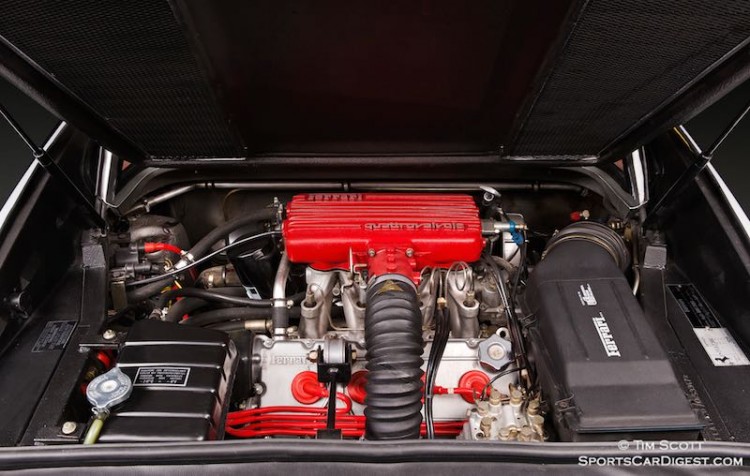
The turn of the millennium brought production on a grander scale, and the 360 became an instant icon. This basic shape and technical layout evolved into the definitive mid-2000 example, the Ferrari F430.
Design: Where Future has a Brush with Tradition
The design of the F430 was executed by Frank Stephenson and Pininfarina. At this moment in time, Stephenson was an automobile designer with a few big hits in his portfolio. Apart from working on the iconic whale-tail Ford Escort RS, he was responsible for bringing Mini back to life under BMW, so he had an inherent sense of reinterpreting traditional elements and giving them a new fresh look.
Starting from 2002, Stephenson worked as a Director of Ferrari-Maserati Concept Design and Development division, where he overviewed and designed concept cars and production models alike. The F430 was one of those cars.



In Stephenson’s own words, the brief was fairly short: the officials wanted him to keep the key elements of the Ferrari 360 and to make them prettier for the upcoming heir. The task was not that simple though, because the 360 was already a stunner, but Stephenson saw this vague brief as an opportunity to harden the lines he thought were too soft on the 360 Modena.
Stephenson gave more definition to the vents and the trademark round stop lights were moved upwards to give a more energetic look the Enzo had. The front end also had to be redefined and Stephenson seeked inspiration in the 1961 F136, the F1 car driven by Phil Hill and designed by Carlo Chiti. The distinctive sharknose front of the F136 was the perfect dramatic feature Stephenson needed to complete the design of the new Ferrari supercar.
The reworked body of the F430 retained the same drag coefficient of 0.34 as the 360, but with functional revisions. As a final touch, the F430 got its name imprinted onto the side mirrors.
Construction and Performance
Although the F430 was developed to be a new car, it inherited the core element from the 360 Modena. The car was constructed around the Alcoa-developed aluminum space frame chassis. The American company partnered with Ferrari during the development of the 360 Modena, resulting in a solution that was 40% stiffer and 28% lighter chassis than traditional steel sub frames of previous mid-engined cars like 348 and 355.

Yes, the F430 might have shared the basic construction principles with the 360 Modena, but its beating heart was revolutionary for the company. Prior to the development of the F430, all Ferrari V8 engines were derivatives of the Dino V-shaped engines.
The long-lasting series of V6 and V8 engines was conceived by Enzo Ferrari’s son Alfredo ‘Dino’ Ferrari, who sadly passed away in 1956, before he could see the finished design of the engine. Vittorio Jano took over the project, first constructing the V6 that found its place in the Dino series of cars, only to introduce the V8 later. Ferrari’s Dino engine was used in both racing and road cars and the 360 Modena was the last car from Maranello to have it under its hood.
In the early 2000s, Ferrari and Maserati, both owned by Fiat, joined forces in creating the F136 engine. The so-called Ferrari-Maserati V8 first appeared in the 2001 Maserati coupé, and in 2004 it found its place inside of the F430 as the F136 E or F136 ED. The main features included dual camshaft, four valve per cylinder construction with variable valve timing, flat plane crankshaft and dry sump. In order to achieve ideal volumetric efficiency, valves and intake trumpets were directly lifted from the Formula 1 program.

In its base form, the F430’s F136 V8 had 483 horsepower at 8,500 RPM and 343 lb?ft of torque at 5,250 RPM. Talking about straight line performance, the 0-60 MPH sprint took 3.6 seconds with the top speed of 196 MPH.
When it comes to transmission, there was a choice of between two units. Most buyers opted for modern F1 transmission, a sequential manual transmission, with an automated clutch and paddle shifters behind the steering wheel.
As an upgrade over the 360 Modena, the steering wheel with the manettino dial on the F430 allowed the owner to fine-tune their car’s character. The F1 shifter was an optional extra, yet it found its way to over 80% of all F430 cars ever produced. That brings us to the other number, the now highly coveted three pedal, 6-speed gated manual transmission examples. The classic manual transmission unit is less efficient than the F1 shifter, but it offers a more traditional, more riveting experience, while also being a collector car credential.

For the first time in any of its cars, the F430 was equipped with an E-Diff electronic differential. This feature was standard on all F430 cars and was lifted directly from the F1 racing program. This system is known for effectively transferring torque to the wheels even under extremely high cornering G-forces and it greatly improved road holding over the previous cars.

The brakes were jointly developed by Bosch and Brembo, resulting in molybdenum-enforced cross-drilled cast iron brake rotors utilizing four-piston calipers to ensure optimal stopping power. Examples produced from 2008 until the end of production were equipped with more efficient carbon-ceramic brakes as standard, whereas they were a hefty $20,000 option until the 2008 model year.
Special Variants of the Ferrari F430
Apart from the stock F430 in hardtop and soft top form, Ferrari produced several special variants for those seeking more excitement, refinement or exclusivity.
F430 Scuderia
With this variant of the F430, Ferrari added more power while reducing weight, resulting in 510 HP paired with a body that was 220lb lighter. To shed weight, Ferrari stripped the F430 of all unnecessary luxuries, replacing leather seats with simple lightweight buckets and ample use of carbon fiber both inside and out.

The power gain and weight loss weren’t the only improvements though. The F430 Scuderia got a faster shifter, courtesy of enhanced software for its automatic gearbox.
Improved handling was attained via E-Diff electronic differential and F1-Trac traction (which originally appeared on the 599 GTB), while improved brakes granted greater stopping power. The end product of the F430 Scuderia was an exhilarating experience fully focused on track performance.
Scuderia Spider 16M
The F430 Scuderia was available only as a hardtop coupé, so when Ferrari was victorious in their 16th Formula 1 Constructor’s World Championship, they took the chance to present an open-top variant called the Scuderia Spider 16M.
This highly limited run of 999 cars had the same engine specification as the F430 Scuderia, but Ferrari managed to cut the weight down by 176 lb.
The chassis got reinforced to cope with increased power so the Scuderia Spider 16M offered similar overall performance as its hardtop counterpart, but with an immersive feel of an open top race car.

SP1 F430
The F430 kickstarted the Ferrari Portfolio Program, an in-house department dedicated to creating unique builds for the most discerning clients. Creating unique Ferraris was nothing new, as many well-off Ferrari owners sought their way towards exclusivity by commissioning some of many coachbuilders to create unique works of art out of their Prancing Horses.
Ferrari wanted to offer the same level of service straight from the factory, and the first personalized Ferrari coming from this department was the SP1 (Special Project 1), a unique creation commissioned by Junichiro Hiramatsu, an eminent Japanese businessman, and an avid Ferrari collector.

The body of the Ferrari SP1 was designed by Pininfarina’s own Leonardo Fioravanti, with some styling cues from the 1998 Ferrari F100 concept car.
Racing the Ferrari F430
Ferrari’s rich racing heritage didn’t pass the F430. Apart from being the official car of the factory-backed Ferrari Challenge racing series, the F430 successfully competed in numerous racing series. So, this is a quick recap of race track ready variants of the F430.
F430 Challenge
Ferrari F430 was a part of the one-make Ferrari Challenge racing series from 2006 to 2011. For this purpose, Ferrari created a limited run of Ferrari F430 Challenge cars. The power output of these cars remained the same, but all excess weight was shed and there were several tweaks and improvements.

The modifications included upgraded F1 transmission with revised final drive ratio and changes to the fifth and the sixth gear. Next, the exhaust was fully open, traction control and so was the stability system, whereas the E-Diff was replaced by a mechanical differential. The suspension was modified for racing, the brakes were carbon, and there were custom BBS wheels with a central nut for quicker pit stops.
F430 GTC
This racing variant premiered in 2006 and was built by Ferrari Corse Clienti department and Michelotto Automobili. The F430 GTC competed in GT2 class competition of the FIA GT Series, American Le Mans Series, Le Mans Series and the 24 Hours of Le Mans.
In order to comply with the FIA GT2 rulebook, the cars needed to have a specific minimum weight and a specific engine displacement too. That’s why the 4.3l V8 engine had to be destroked to 4.0l in order to compete in the 3.8 to 4.0l GT2 class of the era, which was allowed to race with a minimum weight of 2,425 lb

The destroked variant of the F136 V8 engine produced 439 horsepower and in addition to decreased horsepower than the base F430, it was also 110 lbs heavier. Still, by shedding all excess weight from the rest of the car, this drawback was compensated, so the F430 GTC got a better power to weight ratio.
F430 GT3
Another racing variant, the F430 GT3 was largely based on the F430 Challenge car, meaning that it had the same 4.3l V8, but with power output increased to 550 horsepower. However, the GT3 had to have a power to weight ratio of 5.73 lb/hp in order to comply with the regulations, so its weight was 262 lb more than the GT2-spec F430 GTC. Because of that, the F430 GT3 was slower even though it was nominally more powerful.

F430 as a collector car
The F430 is an important car for modern-day Ferrari for many reasons. First of all, it introduced Ferrari into the new V8 era, while retaining the lustful gated manual – one traditional element of the old days. Secondly, the car features a striking new design paying tribute to the glorious past by incorporating the historical DNA. These features check all the desirability boxes, and as the first examples are nearing 20 years of age, it’s safe to say that it is an unquestionable modern classic.
Of course, the downside of the F430 as an investment material is a relatively high number of examples built. On the other hand, that’s great news for enthusiasts. The F430 will be relatively affordable as a driver’s car and a usable weekend classic, while more ambitious collectors will hunt for the rarest of the rare: F430 Scuderia, Scuderia Spider 16M and low mileage examples, especially if they are manual. F430 Challenge, F430 GTC and F430 GT3 will also command higher price as they hold a piece of racing history, while also being eligible for historic racing in the future.
Valuations for the 2006 Ferrari F430 can be seen in the table below:
| Condition | Price |
|---|---|
| Concours | $121,000 |
| Excellent | $108,000 |
| Good | $97,000 |
| Fair | $79,200 |
The F430 is both graceful and intimidating, just as one Ferrari supercar should be. Definitely a looker, the F430 is even more than that. It’s an exhilarating driver’s car that provokes all senses and that is its greatest quality no matter what the numbers say.


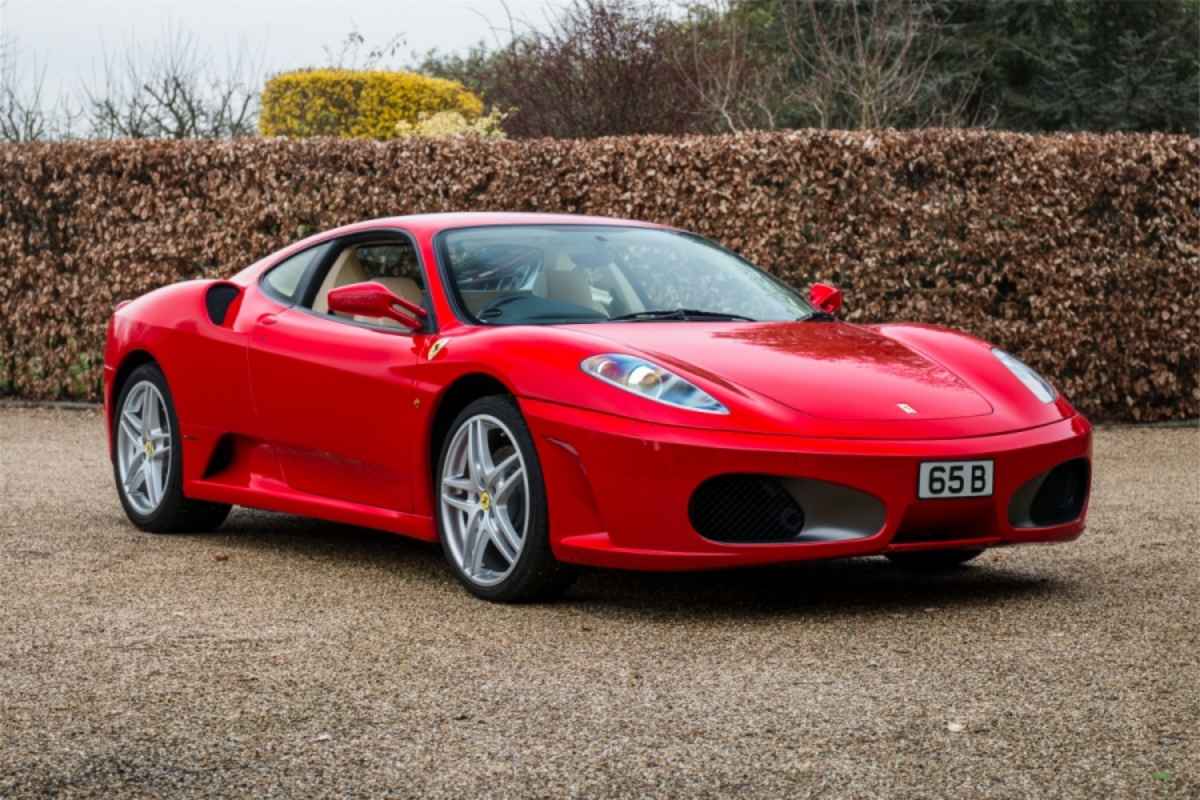




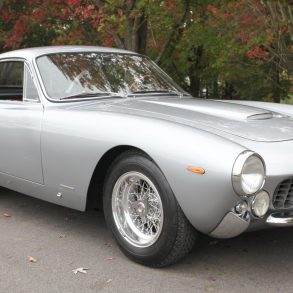
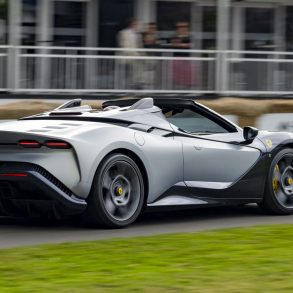
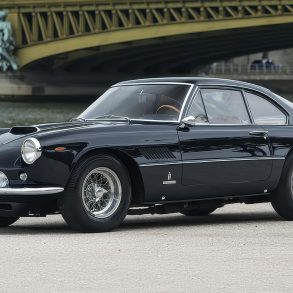

Excellent, comprehensive article on the 430. I especially enjoyed the video of Frank Stephenson explaining his design process. One stat that jumped out at me was the 430’s drag coefficient of 0.34 matching that of the 360. Proving, perhaps, that looks can be deceptive, as I recall the 1986 Mercedes E-class 4-door sedan, designed under M-B’s head of design Bruno Sacco, boasted a Cd of 0.31.